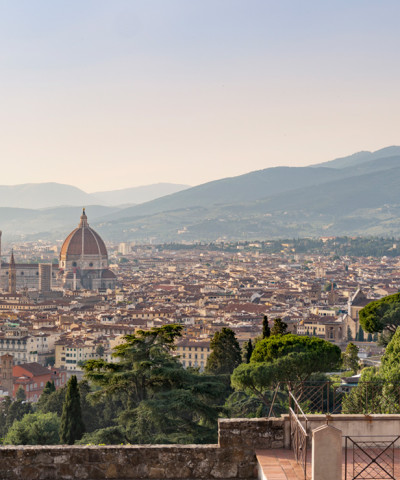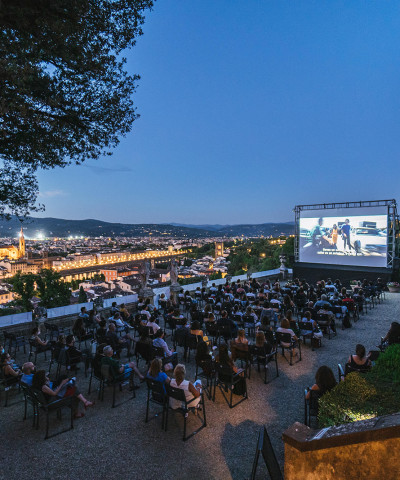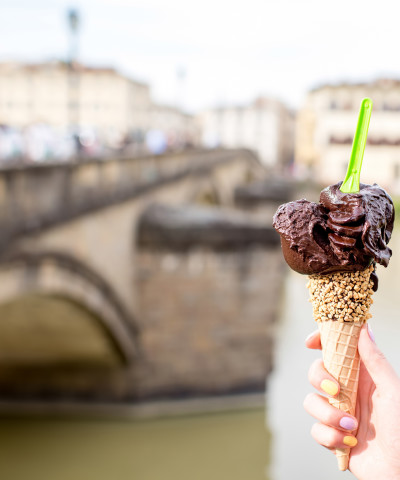The most beautiful Medici Villas to visit near Florence
A tour to discover the 4 beautiful residences of the Medici family
The Medici family’s villas were a veritable ‘system’ of imposing country residences that belonged to the Medici between the 14th and 18th centuries, around Florence and in Tuscany, then then passed to the Lorraine and later to the Savoy. Besides being places of rest and recreation (above all hunting), they were summer palaces in the territories administered by the Medici, but also the beating heart of their economies and local agricultural activities. Stefano Casciu, the ‘Head of the Heads’ of the Ministry of Culture’s Regional Museums Business Group of Tuscany, takes us on a tour of four incredible and delightful Medicean places - three villas and a monumental garden - which have been part of UNESCO World Heritage Sites since 2013, in an itinerary that starts at the gates of Florence, passes through Poggio a Caiano in the province of Prato, and reaches Cerreto Guidi, at the edge of the province of Florence bordering Pistoia and Pisa. Here is his story.
VILLA LA PETRAIA
The La Petraia and Di Castello villas, located in the Florentine countryside north-west of the city, make up an almost compact whole. In fact, they are not much more than 500 metres apart, but it is best to have a car to get to them from the centre of Florence. After the Medici and Lorraine families, Villa La Petraia was used extensively by the Savoy family, so much so that the covered courtyard created for the wedding between Emanuel of Mirafiori, son of Victor Emanuel II and of the bella Rosina, and Blanche de Larderelin 1877 holds an extremely dear memory of it. Petraia and Castello were areas of vineyards until the 18th century; this is hard to notice nowadays because the area has undergone some serious transformation. It has become a residential area and the area behind the Petraia park became Romantic in style in the 19th century. The beautiful garden in front of it has beautiful terraces with panoramic views of Florence. Visitors should begin the tour of the 4 Medici villas, which are part of our regional Directorate, which has 46 heritage places, by starting at Petraia, not only because it is the closest, but also because there they can get a visual idea of what the entire system of Medici villas was like through Giusto Utens’ 14 famous lunettes, which are now exhibited in the halls of Villa La Petraia. We know very little about this mysterious Flemish painter, apart from the fact that he was a painter and geographer, and he devised these perspective views for the de’ Medici family with a few tricks. So at Petraia, the public can get a general and all-round idea of what the system of the villas was like and understand what was going on because these views represent moments in the life of the villas: you see the figures, the carriages, the peasants and this is all quite unique. Petraia also has a very nice garden with beautiful terraces with views.
THE GARDEN OF VILLA DI CASTELLO
At Castello, where today the villa is the headquarters of the Accademia della Crusca, the garden theme predominates, created at the behest of Cosimo I at the very beginning of his reign and by the best architects of the time, starting with Tribolo (who was also the architect for the Boboli Gardens), then Pierino da Vinci, and followed by Ammannati and Vasari. It was studied by pursuing the idea of a physical transformation of a piece of land through nature but also through art, to create a fascinating symbolic water route from the Apennines to the Grotto and the fountains. The original Castello fountains are currently on display at Villa La Petraia: the fountain of Hercules and Antaeus, the fountain of Fiorenza and the Venus of Giambologna. You will understand why it is worth visiting the two villas together in order to get a full idea of Castello’s gardens: looking for the original traces in Utens’ lunette and the original fountains replaced by copies in the garden itself. There is, however, one original fountain left at Castello and it is Ammannati’s Appennino (or Winter) fountain, the origin of everything. Upstream is a large basin with the Apennines depicted as an old man, from which the entire water and canal system starts, which at the time was based on the ability of plumbers and architects to make the water from Monte Morello flow downwards by gravity into the Apennines firstly and then into the Grotta degli Animali, which is in the heart of the gardens and which we are currently finishing restoring. We have recently reactivated the water features and when we finish the works, the fountains will flow again like they used to on at least 1 day of the week. But Castello is also known for its collection of around 500 potted citrus plants! The biggest collection of potted citrus fruits in the world. The Medici were extremely passionate about citrus fruits and had a special taste for the different varieties. Here, for example, we found the so-called Bizzarrìa, a cultivar that combines citron, orange and lemon. It has green, yellow and orange segments. Having disappeared after the 17th century, in 1980 our former gardener Paolo Galeotti miraculously found it in a nursery and had it reproduced in Castello’s gardens. We currently have several plants.
VILLA DI POGGIO A CAIANO
The Medici Villa of Poggio a Caiano is perhaps the most important villa because it was designed and built from scratch in the 15th century by Giuliano da Sangallo for Lorenzo the Magnificent. This is a true prototype because Giuliano Sangallo, who is a fundamental architect when it comes to understanding the Renaissance, took his inspiration directly from Vitruvius. There is a basis villae, a sort of large podium which the villa sits on with a large portico, sub-porticoes, and all the criteria derived from Roman architecture as described by Vitruvius and partially seen by Giuliano San Gallo in Rome. This villa is therefore a real theorem, so much so that unlike the others it was not intended for agricultural production and livestock breeding (important business for the Poggio a Caiano system) but organised separately in Tavola away from the villa. The Villa of Poggio a Caiano was more of a prince’s residence and therefore linked to the theme of idleness. It was the prince’s place to live and gather on issues related to philosophy and the inspiration of antiquity. So much so that the architectural structure of the villa does not have the central courtyard where the country business was conducted, unlike the others, but there is the large hall inspired by the Roman baths with the barrel vault, a masterpiece by Giuliano Sangallo, and then there are the frescoes by Pontormo, Andrea del Sarto and Franciabigio. It was devised with a completely different idea. Lorenzo the Magnificent took the Visconti and then Ludovico the Moor as his reference to create this farm of great economic importance. Poggio a Caiano produced milk, grain, fruit, animals for the palace and beyond, so it is a real villa for the community. Some time after Lorenzo the Magnificent came the Tribolo stables because that is where people went hunting, and it is in the stables where the Soffici Museum now stands.
To give a sense of the naturalistic, agricultural and scientific aspects connected to the villas, on the second floor of Villa di Poggio in Caiano, at the instigation of the then superintendent Antonio Paolucci and from an original idea by Marco Chiarini, I had the opportunity to design and create the Museo della Natura Morta (The Still Life Museum) on the second floor of the Villa at Poggio a Caiano, the only museum that is completely dedicated to this theme. The museum is in fact a summa of the Medici’s still life collection up to Cosimo III and the Electress Palatina. We move chronologically from the end of the 16th century to the beginning of the 18th century, and at the same time follow the development of the genre of the depiction of nature, which can be still life in the classical sense or the natural and sometimes almost scientific depiction of plants and animals.
VILLA CERRETO GUIDI
Continuing from Poggio a Caiano along the plains that span for another 30 minutes to lap the Padule di Fucecchio marshes, returning to the province of Florence, we arrive at the lesser known but extremely charming Villa di Cerreto Guidi. It enjoys breathtaking views set in an elevated position amidst the beautiful countryside. The architectural structure is imposing with a system of ‘staircase’ access ramps known as Ponti Medicei, which make up the salient feature of the villa and which, wrongly attributed to Buontalenti, should perhaps be attributed to the work of a very talented engineer like Davide Fortini. The villa, which originally wasn’t intended to be much more than a hunting lodge, was to all intents and purposes built under Ferdinand II as a garrison for hunting and fishing in the nearby Padule di Fucecchio marshes. From a furnishing point of view, it has had a similar history to many other Medici villas that the Lorraines emptied, sold and only later bought back practically bare. Today, however, whoever enters the Villa di Cerreto is able to admire a vast array of works of art, furnishings, Medici portraits and sculptures; there are some very fascinating works of art and antique furniture but which are not originally from this place since a few years ago it was furnished with some of the most interesting pieces of the Bardini collection, the fruit of the collecting work of the antiquarian Stefano Bardini (1836-1922), who donated his assets to the city of Florence.











